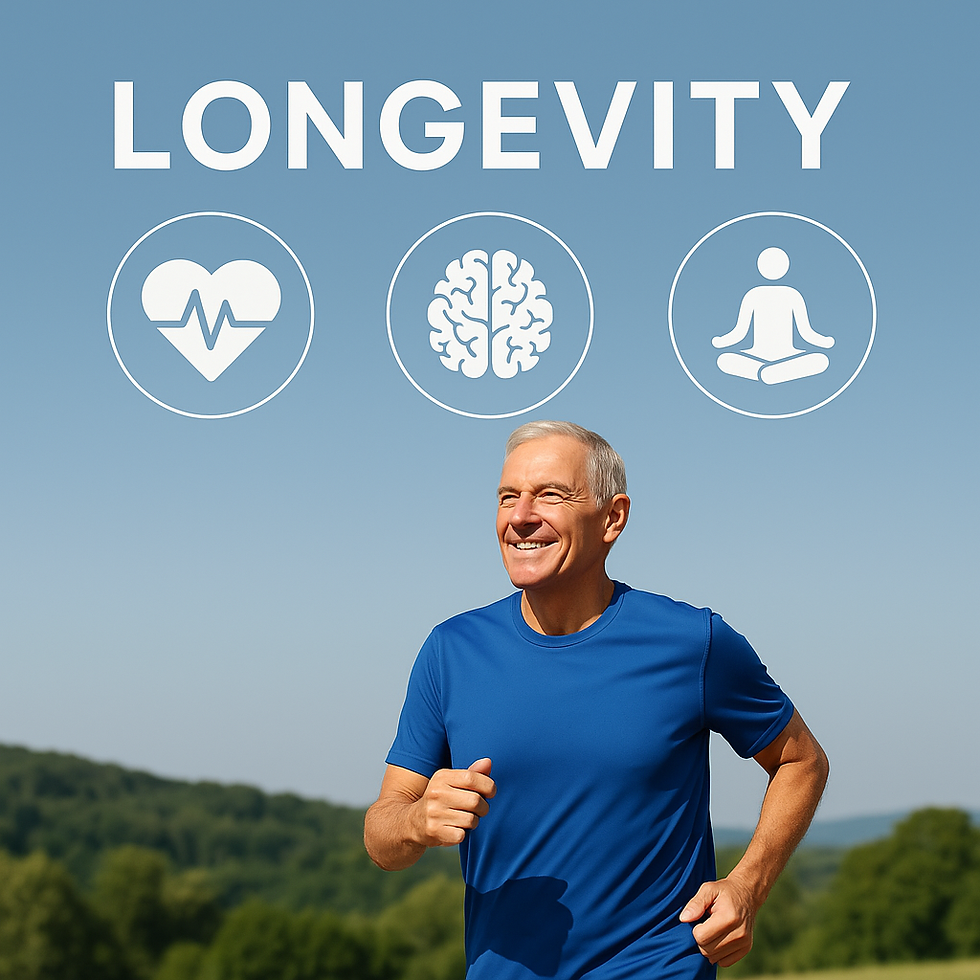The Crucial Role of Your Eye & Neck Movements in Your Fitness Routine
- Dr. Sean Burkhardt
- May 24, 2024
- 3 min read
Maintaining optimal coordination of your eye and neck movements is essential for your fitness routines and preventing injuries as these areas influence your posture. Understanding how neurological systems, such as eye movements and head motions, interact with muscle activation or relaxation can significantly impact your exercise performance and overall health.

Eye Movements and Muscle Facilitation/Inhibition
1. Vestibulo-Ocular Reflex (VOR)
Function: The VOR stabilizes vision during head movements by producing eye movements in the opposite direction.
Mechanism: When the head turns to the right, the VOR causes the eyes to move to the left, ensuring stable vision. This reflex involves the coordination of eye and neck muscles, facilitated by signals from the vestibular system.
Impact on Muscles: Dysfunction in the VOR can lead to neck muscle tension and poor postural control because the muscles work harder to stabilize the head and eyes. This can result in fatigue and strain, particularly during dynamic exercises, increasing the risk of falls and musculoskeletal injuries.
2. Cervico-Ocular Reflex (COR)
Function: The COR complements the VOR by adjusting eye movements based on neck muscle activity and proprioceptive feedback.
Mechanism: When the neck turns, proprioceptors in the neck muscles send signals to adjust eye position, further stabilizing vision.
Impact on Muscles: Proper functioning of the COR helps reduce unnecessary strain on neck muscles, facilitating smoother and more coordinated movements. This helps maintain proper form and decreases the risk of injury during exercises involving complex head and neck movements.
Head Motions and Muscle Facilitation/Inhibition
1. Head Tilts and Righting Reflexes
Function: When the head tilts, the righting reflexes work to maintain body balance and orientation.
Mechanism: Otolith organs in the inner ear detect head tilt and send signals to the brainstem and spinal cord to adjust muscle tone in the neck and spine, ensuring upright posture.
Impact on Muscles: These reflexes facilitate the activation of extensor muscles on the side to which the head tilts, inhibiting flexor muscles on the opposite side, aiding in postural adjustments. Proper functioning of righting reflexes ensures balanced activation of muscles, maintaining upright posture and stability.
2. Rotational Movements
Function: Head rotation involves coordinated action between the neck and spinal muscles to support movement and stability.
Mechanism: The semicircular canals in the inner ear detect rotational movements and send signals to the vestibular nuclei, which coordinate with the cerebellum and spinal cord to adjust muscle activity.
Impact on Muscles: Rotational movements can either facilitate or inhibit neck muscles depending on the direction of rotation, promoting balanced muscle activity and preventing overuse injuries.
3. Flexion and Extension Movements
Function: These movements involve bending the head forward (flexion) or backward (extension).
Mechanism: Proprioceptive feedback from the neck muscles, along with visual and vestibular inputs, coordinate these movements.
Impact on Muscles: Flexion typically activates the anterior neck muscles (flexors) and inhibits the posterior muscles (extensors), while extension has the opposite effect, ensuring a coordinated and balanced movement pattern. Proper coordination of these movements enhances postural control and stability, reducing the risk of injuries.
Clinical Implications
Assessment and Rehabilitation: Understanding these mechanisms is crucial for diagnosing and treating conditions like cervicogenic dizziness, whiplash-associated disorders, and balance impairments.
Therapeutic Exercises: Specific eye movement exercises, such as gaze stabilization and saccade training, can enhance VOR function and reduce neck muscle tension.
Postural Training: Incorporating head and eye movement coordination exercises can help retrain the proprioceptive system and improve overall postural control.
Facilitating Strength and Preventing Injury
Enhancing Proprioception and Coordination: Optimal functioning of these systems improves proprioception and coordination, which is crucial for maintaining proper form during exercises. This reduces the risk of compensatory movements that can lead to injury.
Balanced Muscle Activation: Efficient eye and head movements ensure balanced muscle activation, preventing overuse of specific muscles and promoting overall muscular health.
Improved Stability and Posture: Proper functioning of these reflexes and movements enhances stability and posture for safe and effective exercise performance. This reduces the likelihood of falls and related injuries.
Neurological health plays a vital role in your fitness routine. By understanding and optimizing the function of eye movements and head motions, you can enhance your exercise performance, prevent injuries, and promote overall health. Incorporating exercises that improve these neurological functions can help you achieve balanced muscle activation, better stability, and proper form, which are key to a successful and safe fitness regimen.
References
Bronstein, A. M., & Lempert, T. (2010). The vestibular system: neurophysiology and clinical diagnosis. Oxford University Press.
Leigh, R. J., & Zee, D. S. (2015). The neurology of eye movements. Oxford University Press.
Hain, T. C., & Helminski, J. O. (2007). Anatomy and physiology of the vestibular system. In Vestibular rehabilitation (3rd ed., pp. 3-16). F. A. Davis Company.
Gandevia, S. C., & McCloskey, D. I. (1977). Changes in motor commands, as shown by changes in perceived heaviness, during partial curarization and peripheral anaesthesia in man. Journal of Physiology, 272(3), 673-689.



Comments